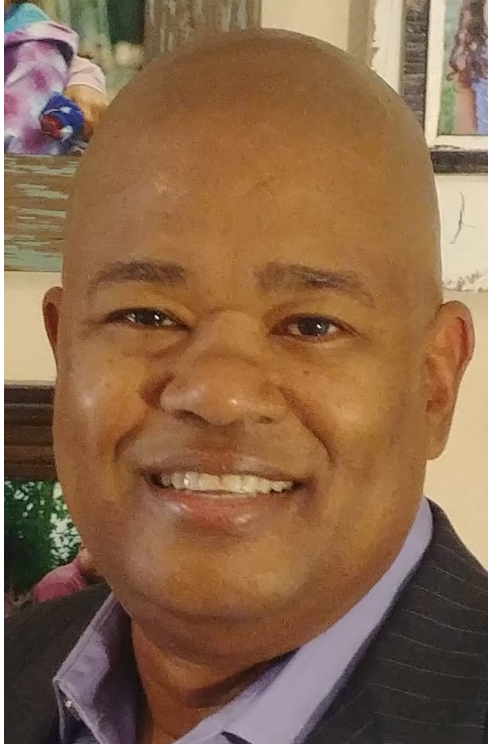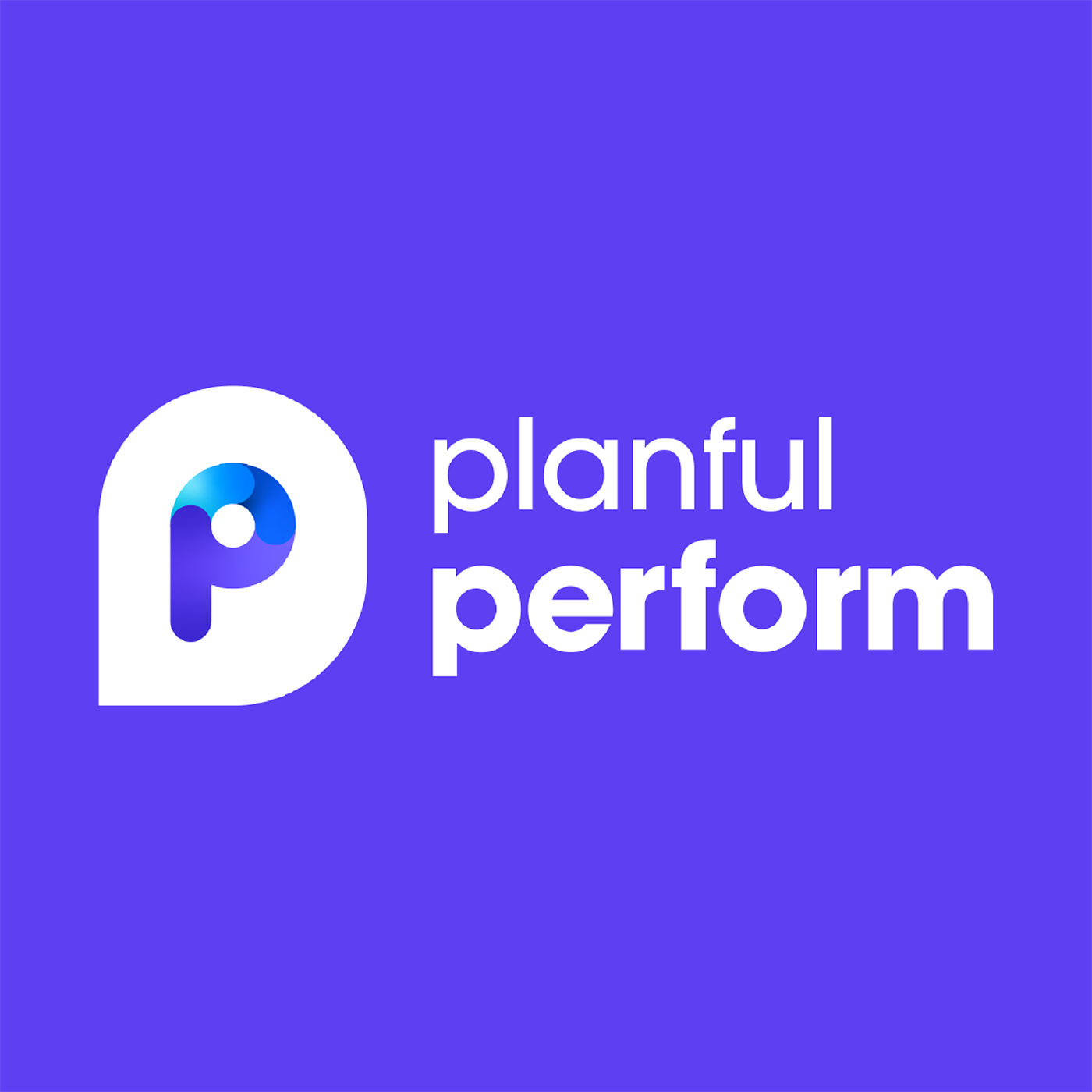Sustaining High Speed Growth in a Constantly Changing Business with CFO Solutions and Imagen Dental Partners
- 0.5
- 1
- 1.25
- 1.5
- 1.75
- 2
John: For our agenda today, we're going to be getting to know Imagen, so Gaylord would be kind of kicking us off and walking us through Imagen Dental Partners, just very exciting growing business. Then we'll be moving on to how we implemented the Planful application within Imagen, and then discuss some of the functionality that we deployed. And then something fairly unique with how we leverage dynamic planning, and I'm kind of coming up with their kind of acquisition model. We are hoping because we aren't doing this one live, we are hoping that we've got some time at the end if there's any questions or if we have any kind of feedback, we'd be happy to go through that in a little more detail. So I think without further ado, Gaylord, I will hand it off to you to walk us through Imagen.
Gaylord: Thank you, John. So who is Imagen? If we can move to the next slide, please, Jen. We'll talk about Imagen Dental Partners is a company that was founded last April. So we are about a year and a half old. And what we had was some folks with some pretty deep experience in dental come together and think that there's an opportunity for a unique company in the dental space. So Imagen Dental Partners exactly as we sound, we partner with dentists. So we go in and then the partnership organization means that we have partial interest in the dental practice, and the dentist has partial interest in our company. So it's a true partnership in that neither one of us completely owns the other, but we work together to achieve team outcomes that we both desire. It's been fun, it's been really fast. I joined last December. We had affiliated with three practices at that time, and I think as of last week we're at 17. So the company is growing quickly. We have a lot of very exciting moving parts across the board. So we're pretty excited about that. Talking about why Imagen shows Planful, so when I met with other leaders at Imagen, one of the things they were very keen on right early on in this company's story is that, hey, we need FPNA, which is I thought great. Normally, FPNA comes along so much later in the story. And one of the very first charges, can you go out and evaluate and select a planning system to put in place for us? We need financial reporting, we need financial analysis. We're talking about growing at a rate of between 60 and 80 dental partnership affiliations every year. And we need to get ahead of this rather than trying to play catch up. These dentists are folks that are used to doing their own books and seeing their financials on an ongoing basis almost daily. So what can you do? So I went out and had a look at, and I've gotten a magic quadrant like the top four applications out there that I thought would be appropriate for our space, and really kind of the defining characteristics that I'm looking for is I need a strong application. I need something that's big and robust, something that can assimilate five to 10 practices in a month and merge those chart of accounts and produce reliable, accurate, fast reporting for these dentists that nobody's sitting around and wondering," Well, when are we going to see financials and want to get to see reporting?" And as I thought about the scope and the scale that we're going to be now looking at possibly being as many as 300 practices in the next three years, I really needed a robust application with just a lot of power to just churn these things out on a repeatable and scalable basis that we could just keep moving forward. So, Jen, next slide, please.
Jennifer: Of course.
Gaylord: Thank you. So rap reporting, right being one of the first just key criteria for us, how can I get reporting out every single practice? And our doctors all talk to each other. They have their own chat groups, they see each other at conferences. So it couldn't be something that we were piecing together on a practice by practice basis, right? We need it it to be scalable and repeatable. We need it to give every single doctor, the same set of reports every single month that they can talk common language that we can reach out and have conversations with them and everybody understands what we're seeing and there's a single source of truth. So we needed really robust reporting out of this application. Then the next thing we thought about is that there are these key drivers in each dental practice. What are these high value items that we need to be able to get to and look at when we think about a dental practice, whether it's the number of dentists, the number of hygienists, the number of operatories in a dental practice. Now, what are these things that really drive performance at a dental practice? And how can we assimilate this data, perform great analytics on it in almost real time, provide feedback both to Imagen's leadership, as well as to the dentist at their practice. And finally, what becomes a unique challenge for us in this high growth environment where we are partnering with 80 dentists in a year, how do we develop a rolling forecast? How do we roll up this company and say, okay, we're going to bring in these practices this month, those practices in the next month, what does that look like from a financial perspective? How do we think about Imagen's financials. Like so many other companies, we have investors and we have lenders and these people want to know, what are you doing, where are you in your growth process, how is the acquisition pipeline going, what does this do for our company forecast? These are all the things that we looked at an application to address for us. So with that, I think we go to Jen.
Jennifer: Yeah. So we're going to talk a little bit about how Imagen is using Planful in leveraging the flexibility of that platform. So three big areas here that really Planful brings benefit to Imagen, one is round structure. Gaylord mentioned they're a highly acquisitive business, which means their structure is kind of constantly changing, not so much from a chart of accounts perspective, but from an organizational standpoint, and really kind of that legal entity company perspective, not just with the current, you've got the current organization, the ongoing acquisitions, but also, and we'll get to it a little bit more here in a few minutes, looking forward at the forecasting of those planned and future acquisitions. So the structure updates the easy to maintain structure and hierarchies within Planful in this hierarchy management, really are an asset from the perspective of Imagen and how Planful is such a good fit for them. Scenario management and the use of scenarios in Planful is another great asset from a fit perspective. With as many acquisitions as they're doing and you see it often in highly inquisitive organizations, there's a lot of pre- acquisition data. And really, in order to be able to see that year over year, apples to apples, comparison for reporting, you've got all that data that is really prior to the ownership or the acquisition date. So we're able to leverage scenarios to allow that pre- acquisition data to easily be loaded into the application, and then allow for that year over year, apples to apples comparison as you're looking at financial analysis. And with the number of acquisitions that Imagen is doing, that's a really important component, is not only being able to get that data in but being able to do it quickly. When you've got multiple acquisitions even happening within a month, you can't have a process that takes a lot of time to get that data in because you just don't have that much time with the volume that they're working with. Additionally, we can leverage scenarios for the different slices and dices of their reporting, management reporting versus statutory requirements, all the different components with how they want to slice and dice their data. We're really able to leverage scenarios to help make all of those efficient and effective. And lastly on the reporting front, Gaylord mentioned it just a minute ago, they needed some standardized reporting, they needed quickly deployable reporting, and they really needed to be able to not only meet their internal needs from a management perspective, but also as they continue to grow and as they continue to add in doctors, having a very good, solid, standardized set of reports that their doctors in their new dental practices, newly acquired dental practices, that the doctors can digest. And Planful brings us multiple opportunities to be able to visualize that data, even whether it's your basic income statement P and L type financial report, or we really were able to leverage some of the other methods of visualizing data within Planful. So leveraging spotlight reporting, we were really able to build out a more visual view of that financial data and of that information for the practice doctors as well or dentists as well. So you've got multiple ways to visualize that data in manners that allow finance people to be able to slice and dice and understand what they're looking at. But you also have an audience of users who may not be the most financial, they're not finance people, they're not FPNA professionals, they're not accountants, they understand finances but they may just digest that information a little bit differently. So we were able to build out a package of standardized reports that included some of these dashboards, and allowed us really to replicate that package every time a new dental practice comes into the fold. So it's repeatable, it's scalable, and it really provides the visual component of multiple pieces of data. How do I want it, I like to see it visually and in graphs, great. I've got this. I want to see a more traditional income statement type format, I've got a standardized report that I can pull as well as a dental practice. So it really helped us work closely with Gaylord and his team on what types of reports we needed to build, how they want it to be able to visualize that data, and allowed us to really be a little bit creative with how we wanted to provide that information to the dental practices, as well as then internally for management reporting, a lot of this stuff can be translated back from a total company perspective as well. All right, Gaylord. Back to you.
Gaylord: Thank you, Jen. So we're going to talk about this crazy pipeline we have for these affiliations, right? Where we are and a sort of wrap up here. Well, we'll end this year at 42, and then next year we're up in the 80s, and the year after that, know we're bossing up at 100s. So really, pretty close to 300 acquisitions over three years. So Jen mentioned a couple of times, not only do we have these practices in this pipeline, but they come with all this data. These are existing practices. These are high- performing technically savvy dentists who have really invested deeply in their practice, and they need to understand when they implemented in technology, when they bought new equipment, what is going on with that. And so we were able to build these models. Jen, can go to the next slide, please. We're able to build these models that need to say how many practices are we going to affiliate with in the next 12 months, 24 months, 36 months? What's going to be timing of those acquisitions? So how many September versus how many in April? And then on a configuration, what size, because as good as these dental practices are, they range in size from million and a half in revenue up to four and a half million dollars in revenue. So we have all these different configurations, size of practices, how many operatories are in there, how many dentists, how many hygienists, we have all these complexities as we think about modeling what these affiliations going to look like over the next 36 months? And it gets to be like every leadership team, right? Well, what if we do this? What if we shift this traunch of affiliations by backed by 60 days? What if we pull it forward by 90 days? What if we changed the profile of what these affiliations look like? I'm more able to use dynamic modeling to come up with this great solution. Jennifer, go to the next slide. We'll talk about this solution that we came up for for this profile, for these affiliations, right? So what we did and see if our solutions was able to guide us through this process of if you want to accelerate your planning that you're doing here, if you really want to be able to go quickly and say that today we're looking at 12 acquisitions next April but we want to drop that to two and move three of those up into February, what does that look like? So in dynamic modeling, we're able to build these two profiles of what practices look like. We have sort of a standard practice at about$1. 6 million in revenue a year, and maybe 50% EBITDA, and we have a large practice that's maybe$2.2 million a year and it's running 20 or 25% EBITDA. And we're going to wrap these up over time. So all the things that we do, all the benefits of affiliating with us are going to come in over fast. So you don't want to see it from day one. We're going to increase this EBITDA by 10%, but over the first six months, maybe we get there. So we're able to build these profiles in dynamic modeling, and you can use these across all of the acquisitions we do. So we can build as many of these we want, it's really about how our business looks. And as we looked at the practice profiles that were coming in through affiliation, we said, really, we have sort of two distinct profiles that we want to be able to use. And then the same dynamic modeling and the worksheet looks and works just like Excel. So we'd go down a column that says, profile one, profile two, profile one, profile two, and you copy and paste that all the way down. If you're going to do sewer profile two, so every 15 a profile once, then that's the way she put in there. And then another column just has dates and you just key in all these dates across 300 rows of data that you're going to quickly and easily, you just go in there, we all work in Excel again and again and again, and you keep all these dates, and this data is linked right into our Planful application. So it updates instantly. So basically, my management team, my leadership team, we give them a report that says," Hey, this is what the next five years look like based on that acquisition cadence and profiling cadence." They sit there and they say," We like this, we don't like this. We want..." They always want to accelerate." We won't accelerate this. So how about we make these changes?" And they gave us back these changes, and we're able to make those on the flag in 30 minutes, it rolls right into the application, reports come out and they have a brand new view, see well scenario, so we can always go back to that version control is just absolutely wonderful in the product. And then we can compare this sort of profile and timing to this sort of profile and this timing. And this is all because we use this facility that did all CFL Solutions built for us in dynamic modeling, that instead of having to go into a single entity by single entity in planning and change these variables, you just have this one master sheet where you toggle through all these variables, LiveLink went back into the application, and you have your brand new scenario in 30 minutes. It's fabulous. So Jen, if you like to go to the next slide.
Jennifer: All right. So kind of our closing summary perspective and wrapping things up, a couple of key points here. For us and working with Imagen, the speed of deployment was critical. Gaylord and his team came into this project, they knew what they wanted and they knew they wanted it fast, and they knew they had to have it fast. So we were able in working with Gaylord and his team, we were really able to have a pretty robust reporting and consolidation system or application up and running within the first 45 days, which was great. We had reports off to the races and they were using the system, and really starting to get benefit out of it. Then we rolled into the planning side of things and started rolling out that piece. So we got them in, we got them live. They were very well prepared, knew what they wanted, knew how to clearly communicate it and really had kind of prioritized what was most important to their business before we started the project. So when we got into the kickoff and we got into requirements, Gaylord knew what he wanted, he knew what he needed first, and he knew how he was going to help us understand what needed to be delivered. And those were all really critical components of allowing us to help Imagen Dental Partners get the information they needed, get the benefit from the system as fast as we possibly could. Gaylord.
Gaylord: So while Jen says that we went fast, I mean in terms of real date, so we kicked off the project on February 8th. We had a plan to be doing our Q1 reportings in April out of Planful, and we were off to the races so fast, we were actually reporting February. So in March, actuals out of Planful. So we literally went from," Hey, nice to meet you," to," Here's our first set of reports," in 45 years. It was absolutely fantastic. And a lot of that comes down to just the work and the discipline for selecting an implementation partner. So I started with five companies, a couple of them were referrals, a couple of were straight off of the Planful site. And I easily spent eight hours on the phone with each of them. And very specific in what we needed, very specific in what their process was, sort of getting past that first level of people to let's actually talk to the people doing the work. What are you going to need, when are you going to need it? How much of my team's time are we going to need? Are there other resources at Imagen we're going to need? What is our commitment? And at the end of that process, it was not about some feeling of who could do a job. We had all five of those people present us with their statement of work. Here's how this project is going to run. Here are the critical gates and timelines we're going to hit. Here are the named resources that are going to be in your project. And through that rigor, I think it really informed us to what we would need to get started so much so that the decision with CFL Solutions just as we went through that process, they sort of just rose head and shoulders above everyone, and they weren't the least expensive, but they were by far the most prepared, which is why we ended up with that choice. And it is through that process. Jen was talking about knowing what we needed and knowing how to get started. All that rigor in process really informed what we needed to be ready at Imagen. So in between that time where presentations were final and people submitted their SRWs to us and the decision was made, my team actually started putting together the materials that we had learned through this process that we would need to be able to just get started as soon as documents were signed. And as Jen and the team were meeting the rest of the Imagen's leadership, Jen actually alluded to on the call without knowing she said," And I suspect a lot of us already started accumulating some of the data we need to get started." She didn't know but she was absolutely right. And I think as she said that I started sending data over to the chart of accounts, entity structure, legal company names, just the basics of data that we're going to need to start building the application. But I cannot stress importantly enough finding that partner that is responsive, that is communicative, that has a deep bench. One of the things that was important for us is we wanted an implementation partner that had a Planful practice, not somebody who also did Planful. And this is what Jen does, Jen is the director of the Planful practice at CFL Solutions. And having that strength, that depth, her being able to pull in resources for us to talk through the selection process that we'll be working on the implementation with us, just prove that to be I think as equally an important a decision as was the selection of Planful. John.
Jennifer: Oop, John, you're on mute.
John: And I was just saying I'll keep this quick because I think we definitely pressed our time a little bit. So the important item that I wanted to bring up as we went through the sales process with Imagen, was really, in this particular case, how we ended up using our kind of more or less what I would say is the full suite within Planful. So in this case, we kind of more or less very harmoniously have used the kind of that core application as well as multiple different dynamic planning cubes to hand off lots of different requirements and different types of reporting. So one of our major goals that Gaylord had set out for us in the beginning was looked at I need to be able to acquire these practices. They're all thinly staffed, and I need to be able to fold them in like within weeks, like just immediately, I can't have a thousand meetings, this needs to get done Prato. So we kind of used all of the tools basically within our toolkit within Planful to basically deploy these packages out so that we can very, very quickly absorb all of these different kind of practices as they fold in, as well as plan them out. So it was it was a little bit of a best of both worlds, but in this particular case, we really are using all of that different functionality and kind of bunch of the different integration components within Planful to pull everything together. So with that, I've left us two minutes to at least if there are any questions or if there's any other comments. Otherwise, we can give everybody a couple minute break.( silence).
DESCRIPTION
Imagen Dental Partners runs a high-growth business catapulted by speedy acquisitions. But when reporting friction threatened to erode progress, it turned to CFO Solutions and Planful for financial reporting and analysis that cemented their ability to quickly add financials for newly acquired practices and keep reports up to date. Learn how Imagen and CFO Solutions used Dynamic Planning with Planful to integrate the budgets of acquisition targets, adjust plans to fit changing business requirements, and give leaders the visibility to understand where the business stands, both today and in the future.
Today's Guests







